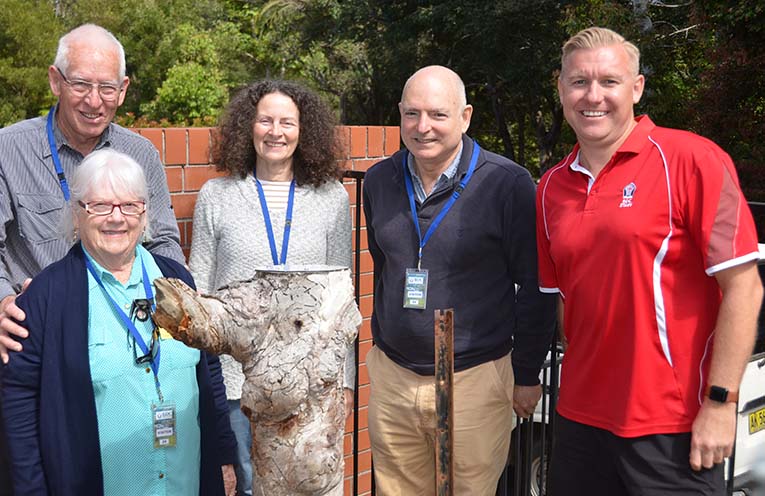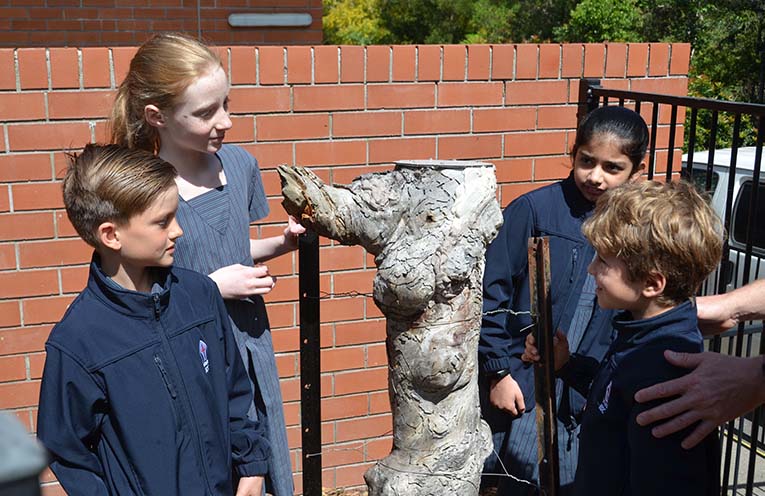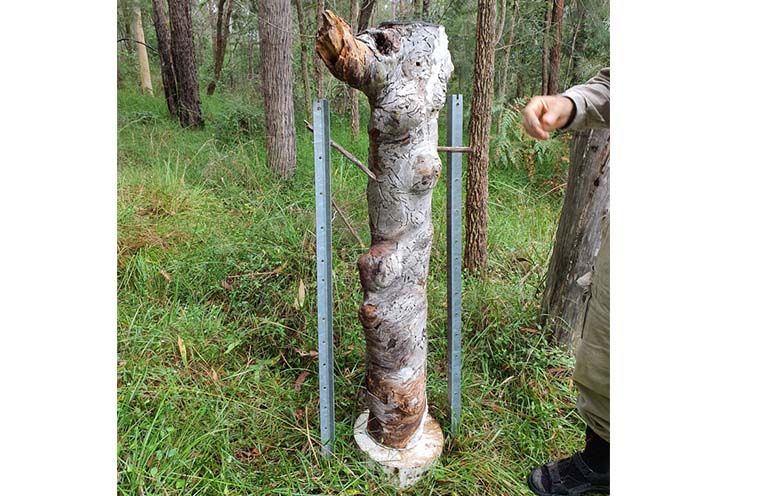
A HAPPY ending for a hive found in a tree felled during preliminary works for the Coffs Harbour bypass earlier this year, is thanks to a collaboration between Roads & Maritime Services (RMS) staff, Bishop Druitt College and the Clarence Native Bees Inc group.
On 15 March 2022 when the hive was discovered in the felled tree at the corner of the Pacific Highway and Bruxner Park Road, north of Coffs Harbour, the RMS contacted the Clarence Native Bees Inc group.
 Advertise with News of The Area today.
Advertise with News of The Area today.It’s worth it for your business.
Message us.
Phone us – (02) 4981 8882.
Email us – media@newsofthearea.com.au
This group had been actively involved in rescuing native bees on the Woolgoolga to Ballina Highway upgrade and were experienced in rescuing fallen hives.
“In March this year members of our club rescued a stingless native bee log hive from road works being undertaken in association with Coffs Harbour Bypass,” Bob Moulds, President of the Clarence Native Bees Inc Club told News Of The Area.
“A condition of the rescue was that the hive should, if recovered successfully, be placed with a community group in the Coffs area.”
The log hive, measuring approximately five feet in length, was taken by club members Robyn Moulds and Paul McEwan to be repaired and enclosed to ensure the best chance for the hive’s recovery.
Six months after the rescue, with recovery successfully achieved, the hive was ready for its new home.
“On Wednesday 14 September the log hive was placed into the Primary School section of Bishop Druitt College, Middle Boambee Road, Coffs Harbour.
“The school is very happy with the hive and will use it as an educational resource,” said Bob.
This hive will be a living example for students to gain a better understanding of the importance of stingless native bees to the pollination process.
“Should any further hives be found when the construction phase of the work progresses, they will receive the same recovery treatment and placement procedure,” said Bob.
“Thanks go to RMS staff and a member of the ecological firm Sandpiper Ecological Survey in making this recovery possible,” said Bob.
Further information can be obtained by contacting clarencenativebees.info@gmail.com.
By Andrea FERRARI


